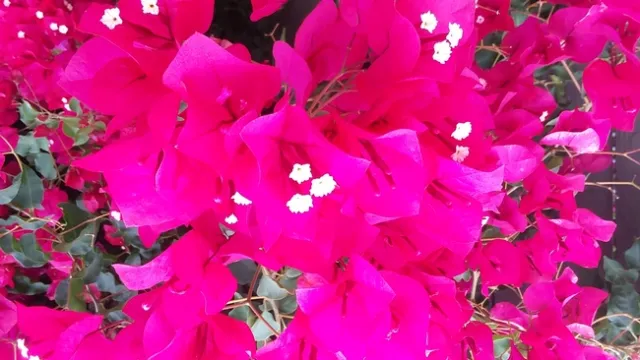
Bougainvillea
By Polly Nelson UCCE Master Gardener
Nyctaginaceae
Planting area: Sunset 5, 6, 12-17, 21-24
Size: 15-30 feet if not diligently pruned, depending on variety
Bloom Season: Spring through Fall, year-round in some places
Exposure: Full sun
Pruning needs: At least yearly
Water needs: Moderate to regular
Snapshot: Spanish-themed architecture and bougainvillea plants are synonymous in frost-free areas of southwest California, although the plant is native to eastern South America. Richly colored petal-like bracts surround inconspicuous flowers that can be single or double types, depending on the variety. Colors range from deep shades of purple to red, and orange.
The rapidly growing vines have heart-shaped green leaves as well as long, needle-like thorns that line the stems. Vines grow well on trellises, arbors, fences, and walls.
Bougainvillea can be planted in-ground in well-draining soil; low-growing varieties do well in containers with sufficient drainage. Container-planted bougainvillea are easier to cover in regions where winter frost is a possibility.
It is essential to leave the roots intact when planting or repotting, as they are sensitive to movement and disruption, and may not recover if overly-disturbed. One way to minimize shock when planting is to cut off the container bottom, then set both the plant and container in the designated planting hole. Slide the container up over the leaves of the plant, filling in with soil at the same time. Tie the vines to a sturdy support, such as a trellis.
Fertilize when growing season begins and again in early summer, with a balanced formula (5-5-5 or 10-10-10) diluted with water to half-strength, or monthly for container plants. Worm compost can be used to amend the soil and improve moisture retention. Follow label instructions to avoid over fertilizing. Fewer blossoms can result from of too much fertilizer, insufficient sun or heat, overwatering, or over pruning.
Prune to manage growth during the growing season. Prune more vigorously annually after the blooms fade to prevent excessive woody growth. Blooms are produced on new growth. Without support and occasional corrective pruning, bougainvillea become a broad, sprawling shrub, but active pruning can produce trees, or ornamental shapes.
Pests include aphids, mealybugs, caterpillars, slugs or snails. Hand-removal is recommended. Neem oil, used as directed, is an additional option.

